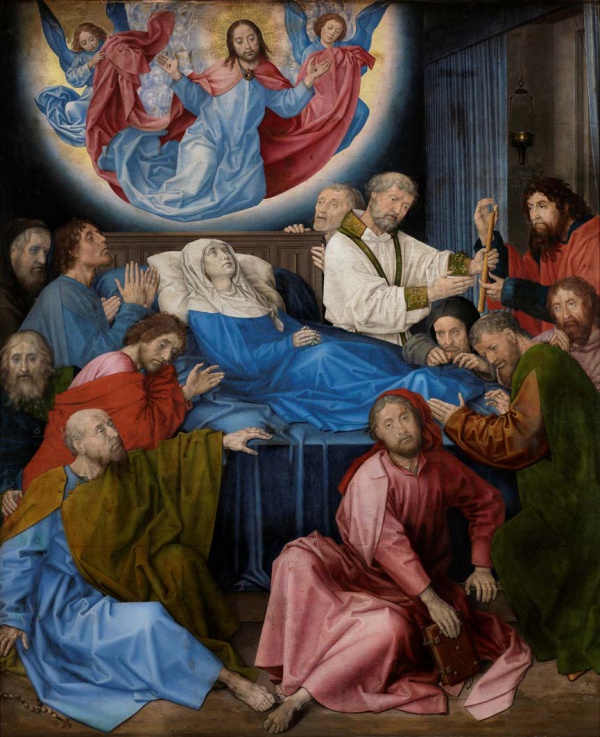Facts About Death of the Virgin (van der Goes)
"The Death of the Virgin" is an extraordinary oil painting on oak panel by the Flemish artist Hugo van der Goes, created between 1472 and 1480. This artwork captures a poignant scene from the "Legenda Aurea" a 13th-century text by Jacobus de Voragine, depicting the Virgin Mary on her deathbed, surrounded by the Twelve Apostles. According to the account, angels transported the apostles to Mary’s side at her request, and Jesus appears above her bed on the third day to receive her soul and later her body.
This painting is considered one of van der Goes' most significant works, exemplifying his mature style. Unlike traditional representations, van der Goes emphasizes the individuality of each apostle, showcasing their grief through diverse gestures and facial expressions. The composition is intentionally compact, focusing on the figures and minimizing the background, which heightens the intensity of the scene. This innovative portrayal has spurred considerable debate among art historians regarding the painting's date and its significance.
Scholars have proposed various interpretations of the artwork. Some view it as a reflection of the artist's psychological state, while others perceive the stylistic choices as deliberate efforts to underscore the solemnity and miraculous nature of the event. Van der Goes' unique vision is influenced by contemporaries like Petrus Christus and earlier artists such as Rogier van der Weyden.
The painting's historical context and artistic significance have prompted extensive discussions about its creation, influences, and what it reveals about van der Goes' psychological condition. Notable figures such as Vincent van Gogh and art historian Erwin Panofsky have contributed to the ongoing discourse surrounding this masterpiece. Despite differing opinions on its interpretation, "The Death of the Virgin" stands out as a prime example of Early Netherlandish painting, highlighting van der Goes' innovative approach and exceptional talent.

 Germany
Germany